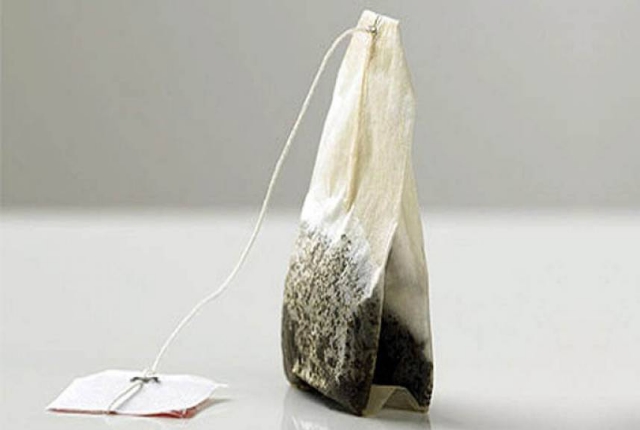A dry socket is said to occur when the blood clot safeguarding the gap created by a missing/removed tooth is dislodged from its place. When this happens, the gap opens up to expose the nerves and bones beneath the gums.This would cause food particles, fluids and other residues to collect in the gap and irritate the exposed bones and nerves, causing immense pain, swelling, dizziness, recurrent headaches and even fever.
Common Home Remedies For Dry Sockets
Dry sockets can be effectively treated with certain home remedies that would offer relief from the pain and swelling. Here are 10 of the most common home remedies for dry sockets.
1. Ice Packs
Placing ice packs on the skin (on the face) above the dry socket can reduce the pain and infection caused by it. Use ice packs (ice cubes stored in bags) or cold towels (dipped in cold water) for this.Placing the ice pack or cold towel on the face for about 15 minutes 3 times every day can provide relief from the symptoms of a dry socket.
2. Lukewarm Saline Water Rinse
Rinsing the mouth with lukewarm saline water solution 4-5 times a day can provide relief from a dry socket and its symptoms. The warmth of the saline solution would reduce the pain and swelling, while the salt content would get rid of any bacteria/virus present in the dry socket.
3. Clove Oil
Applying some clove oil on the dry socket can reduce the pain and swelling caused by the condition. Clove oil can sting a bit. So it is considered best to dilute it beforehand. Accordingly, you can soak a wad of cotton in water and then squeeze it to remove the water.Dab some clove oil on the soaked cotton and place it on the dry socket for instant relief. You can also place the cotton swabs on the neighboring teeth if they pain as well. Follow this remedy 2 times every day to get relief from the symptoms of a dry socket.
4. Cold Tea Bags
Like cold compresses, cold tea bags can be used to reduce the pain caused by dry sockets. Unlike cold compresses though, these tea bags can be placed directly on the dry socket for instant relief. Place the cold tea bag on the dry socket and bite down with your teeth to keep it in place. The tannic acid present in the tea bag would act as an antibiotic and work quickly to reduce the pain and swelling caused by the dry socket.
5. Water And Fluids
Drinking plenty of water and fluids can keep the body hydrated and curb the dizziness caused by the pain arising from a dry socket. Drinking water or fluids at least 4-5 times a day at regular intervals can therefore, control the pain and swelling caused by a dry socket.Just make sure that you don’t expose the dry socket to too much fluids as this could aggravate the symptoms. Drink from the other side of the mouth as much as possible.
Also Read
Top 5 Herbal Remedies For Dry Socket
12 Easy Home Remedies For Dry Socket
12 Effective Home Remedies For Dry Socket
6. Hydrogen Peroxide Rinse
Rinsing the mouth with hydrogen peroxide solution would offer instant relief from the pain caused by a dry socket. You can rinse your mouth with diluted hydrogen peroxide solution (1 cup mixed in 4 cups of water) 3-4 times every day to treat the symptoms of dry socket effectively, and cure the condition quickly.
7. Turmeric Powder Rinse
Rinsing the mouth with turmeric powder solution (contains antiseptic properties) can also be considered beneficial in the home treatment of dry sockets. A teaspoon of turmeric needs to be added to a glass of warm water.The solution needs to be stirred until the turmeric dissolves completely. Rinsing the mouth with this solution 3-4 times every day can therefore, reduce the symptoms of a dry socket significantly, and treat the condition quickly.
8. Homemade Paste
A homemade paste consisting of turmeric powder (a pinch), dry salt (a pinch) and mustard oil (2-3 drops) can be used to relieve the pain and swelling caused by a dry socket. In addition to curing the dry socket, this would prevent foreign particles from entering the dry socket and aggravating the nerves and bones under the tooth. Apply the paste on the dry socket, covering it completely. Keep reapplying this paste every 4 hours or so to keep the pain and swelling down.
9. Yogurt
Yogurt contains plenty of good bacteria that can fight off infection causing bacteria from the body, and promote a quick recovery from several ailments, including dry sockets. Consuming a cup of yogurt 3-4 times a day can therefore, quickly treat a dry socket and reduce its symptoms greatly.
10. Syringes
Sometimes the food that is consumed would leave small particles that get lodged between the teeth. In some cases, these food particles may enter the dry socket and aggravate its symptoms, causing extreme pain in the process. Using a syringe to flush out these residual food particles can prevent the latter from entering the dry socket.You can use a normal syringe (sans the needle) and water to flush out these food particles after meals. Aim the syringe directly at the dry socket and squirt the water gently into the same, thereby flushing out residual particles that could otherwise intensify the pain.
11. Gauze
Placing a piece of moist gauze on the dry socket can reduce the pain and swelling it causes, and prevent foreign particles (including fluids, saliva and even air) from entering it. Place the gauze piece on the dry socket and bite down with your teeth to keep it in place.Remove the gauze piece after some hours and replace it with a fresh piece. This way, the pain and swelling caused by a dry socket would subside quickly.
Note
In addition to following these home remedies to treat a dry socket, it is also considered wise to refrain from doing things that would aggravate the condition and its symptoms. These include smoking or chewing tobacco, drinking from a straw, touching/picking/prodding the dry socket with fingers or the tongue, drinking alcohol, using mouthwashes, spitting forcefully, brushing vigorously on the dry socket and the surrounding areas, and eating foods that can leave behind residual particles etc.












